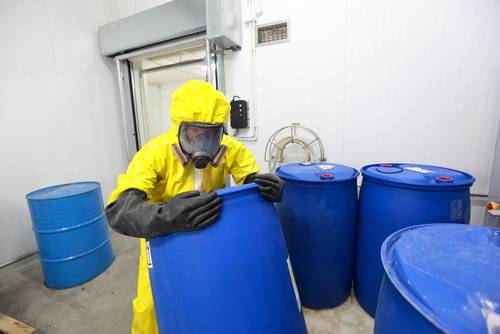Dealing with hazardous waste is no easy task. It involves many steps, but perhaps the most appropriate one is selecting the right hazardous waste container for transportation.
Sadly, there is no one-size-fits-all approach to choosing the right waste container for the job. In order to do so, you’ve got to follow a few specific rules.
Rule #1: Use Only DOT-Approved Hazardous Waste Containers
When it comes to transporting hazardous waste material, one thing truly matters, complying with EPA regulations and using only DOT-approved containers. It doesn’t matter how safe or sturdy you think the container you want to use is, if it is not approved by the DOT, you could be looking at some pretty hefty non-compliance fines. It is important that you follow this rule every single time.
Rule #2: Choose the Right Size Container for Your Generated Waste
There are quite a few options when it comes to the size of containers available to you, as well as the material they are made of. You have an option of choosing 5-,10-, 20-, 30-, and 55-gallon drums.
For those facilities who fill up drums too quickly, there is also the option of going with a cubic yard box. And there are also totes with plastic inner linings and exterior cages to avoid punctures. These are used mainly for hazardous liquid waste.
Rule #3: Choose the Right Container Material
While you can get away with selecting the wrong size container, it’s imperative you choose the right material for the job. For instance, corrosive waste cannot go into a metal drum as it could eat through the metal. The result? A minor leak of hazardous liquid, or worse, a complete container failure. Save the metal containers for flammable waste and use plastic containers for corrosive liquids.
Rule #4: Beware of Dangerous Cocktails
Throwing multiple types of hazardous waste into the same container can become a very dangerous situation. When two or more types of waste interact negatively, the result is a potential explosion, fire, and toxic fumes. It is critical you conscientiously separate out and store waste in containers that are appropriate.
Rule #5: Routinely Check Your Waste Containers
It’s important you routinely check your waste containers to ensure they have not become compromised. A compromised container or lid can pose a serious risk to the safety of your facility and your transportation operators.
Check that all lids are sealed properly. Also, check for dings and dents, and anything that looks off or unusual. If you suspect any of your containers have become compromised but aren’t sure, switch it(them) out with a new one. It is always best to err on the side of safety.
As you can see, selecting the right biohazardous waste container for the job can be complicated. And again, if you get it wrong, it could result in fines or worse.



